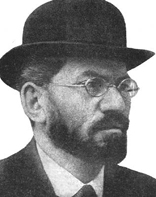In I got It!
When did Bava Basra live?
A "Yiddishe kopp" knows how to bring out the truth.
It was during the court proceedings of the famous Beilis trial that maseches Bava Basra made its one and only appearance ever in a court of secular law. This trial, resulting from a libel, commenced in the year 5661 (1911ce), and lasted a full three years.
The victim of the libel was one Menachem Mendel Beilis (1874-1934), a Jew who owned a garment factory in the Ukraine. He stood accused of the murder of a twelve-year old christian boy, Andrei Yushchinski. The boy’s bound and stabbed body had been found on 12th April in 1911ce (4 Nisan 5661), by a group of youths who had been playing in a field near Lyukanovka, on the outskirts of Kiev.
Despite the fact that the true identity of the murderer, a woman named Vera Chiveriak, was known to the authorities, a deliberate decision was made to scapegoat Beilis. This was largely due to a steep rise in anti-Semitism at the time, a result of the decision of the imperial Russian government to abolish the Pale of Settlement and allow Jews to reside anywhere of their choosing.
In the course of the trial, the prosecution attempted to judge and condemn not only Beilis but also the whole Jewish people. To this end, it brought witnesses who presented sources from our holy writings which were then twisted in order to give the impression that the Torah exhorts Jews to hate the goyim and even encourages their murder.
One of these witnesses was a baptised Jew by the name of Paraintis. The defense rose to cross-examine him, asking him “When did Bava Basra live?”, the ‘Bava Basra’ in question being the third section of the order of Nezikin, the name of which, translated from the Aramaic, means ‘the last gate’. To this, Paraintis responded “nye znayu!” (I don’t know!), with which the defense conclusively demonstrated the ignorance and unreliability of the prosecution’s witness.
The grave of the murdered boy is in Kiev, and is the site, even today, of anti-Semitic ‘pilgrimages’. With the international mood no longer so accepting of overt anti-Semitic displays, the Ukrainian government decided to remove the plaque that had been placed there, which had read ‘here lies buried the young boy who was tortured to death by the Jews’.







